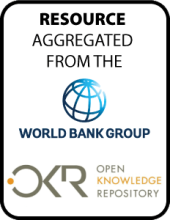Land Library Search
Through our robust search engine, you can search for any item of the over 73,000 highly curated resources in the Land Library.
If you would like to find an overview of what is possible, feel free to peruse the Search Guide.
/ library resources
Showing items 1 through 9 of 71.The main objective of this Economic and Sector Work (ESW) is to identify opportunities for stronger linkages between domestic agricultural supply chains and the tourism sector in the OECS, and to outline priority interventions with potential to strengthen these linkages.
This report focuses on areas with highest potential efficiency gains to increase the value for money from investments in core public goods and services such as extension, irrigation and rural roads.
This note is a summary of a report that
considers urban areas as the complement to rural areas that
will allow the Plurinational State of Bolivia to achieve the
goals set forth in its Patriotic Agenda for the Bicentennial
This paper identifies the low-elevation
coastal zone populations and developing regions most
vulnerable to sea-level rise and other coastal hazards, such
as storm surges, coastal erosion, and salt-water intrusion.
This report is comprised of two volumes:
(i) volume one: risk assessment; and (ii) volume two: risk
management strategy. Volume one continues with chapter one,
which characterizes the recent performance of the
The present study is part of an effort
by the World Bank and the State of Bahia to assess
agriculture sector risks as a contribution to the strategic
economic development and poverty reduction agenda of the
This work summarizes background papers prepared for the World Bank Group with significant input from government counterparts and other development partners.
The Country Partnership Framework (CPF)
will succeed the Myanmar interim strategy note (FY13-14) and
be the first full country strategy for Myanmar since 1984.
This CPF comes at a time of great opportunity for Myanmar;
This systematic country diagnosis (SCD)
for Chad aims to identify how to achieve the twin goals of
ending poverty and improving shared prosperity. It
acknowledges both: (i) the need for selectivity in pro-poor



